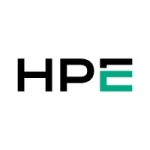What is our primary use case?
We are using Nutanix Unified Storage for the clusters, the AHV, and the environment for our hybrid cloud setup. This was our part of the refresh activity. As a result, our database and SQL servers are running on this unified storage platform.
The challenge we faced was transitioning from our legacy platform, which was at the end of its life. We had the option to either buy some of the Dell platforms or go with a data center refresh activity. Most of our hardware was at the end of its support life, which was becoming costly. This led us to look for a better technology platform, and ultimately we chose the Nutanix Enterprise Cloud Platform after conducting a POC. We found that some workloads were better suited for this environment, so we moved to Nutanix Unified Storage.
How has it helped my organization?
With Nutanix Unified Storage, managing our unstructured data is much easier. The platform's manageability is a significant improvement compared to what we were doing before. Previously, we had to invest a lot of manual effort in tasks like patching and upgrading, but now, most of these activities are self-service and transparent. One example of this is self-service, which allows us to quickly restore files or folders in just a few minutes. This has been very beneficial for our engineers, as it enables them to easily recover files and data on their own.
Nutanix Unified Storage is flexible. We can add storage as we need it because we can add it on the fly. Once we see that our capacity is reaching a threshold, we can easily add a new brick or additional storage to our platform. It's really easy, with no downtime or any other requirements. We can expand it very quickly.
Nutanix Unified Storage is resilient, making it easy to increase storage capacity compared to older three-tier systems. Previously, extending storage required extensive follow-ups and project activities, taking months to complete. Now, these tasks can be done within days or even minutes as soon as storage is available. If assistance is needed, a support ticket can be opened, but most of the time, it is quickly resolved through self-guided documentation. In just a few minutes, tasks that used to take months can now be completed in one day.
Nutanix Unified Storage has significantly improved our organization's disaster recovery capabilities. We have been using Rubrik to back up our other DR activities, making it easier to manage multiple sites. This has allowed us to meet our DR requirements and seamlessly expand our environment while still meeting DR goals.
Nutanix Unified Storage helps to unify our block, file, and object storage. We can easily scale the environment because it operates on a consumption-based model, allowing us to track usage daily and expand our storage accordingly. The platform also allows us to see the capacity of file objects in a single pane, making it easy to access all data platforms from one storage system. This provides flexibility as we can use it for checking block storage, object storage, or file-based storage as needed. Nutanix Unified Storage supports various workloads and storage types in a unified manner.
Nutanix Unified Storage allows our organization to manage and run its storage from one location using a single platform. The flexibility is also a significant advantage, especially with capacity-based licensing, as it enables us to scale our environment as needed. We have observed that sometimes we reach an 80 percent threshold, and based on that, we can plan our consumption model for the next three or six months. We can control both aspects effectively. Additionally, the platform offers a single pane of glass for management, making it very easy to handle. We don't need specialized storage admins; anyone with infrastructure knowledge can manage this platform effortlessly. It's a straightforward and efficient solution for managing and running our storage.
Nutanix Unified Storage has helped us eliminate silos in our organization. We can move critical workloads as needed for IOPS and performance, and these workloads have been running smoothly without any performance issues. We were able to utilize different storage features, such as compression and deduplication, to manage our resources effectively. The best part is the scalability it offers without causing any disruptions or performance problems. We can easily scale up or scale out our environment based on data growth or workload requirements.
The integration between Nutanix Unified Storage, Cluster, and Prism is excellent. They are integrated based on the licensing model we choose. Once we have selected the appropriate licensing, we will be able to use all the features we are licensed for. The software is responsible for integrating all these different products together. Once we have all of them set up, we will be able to see all three solutions in one dashboard. This dashboard allows us to monitor our business, view running VMs, and track resource utilization.
There is a software called Nutanix Data Lens that provides insight into our infrastructure data. With it, we can keep track of anything we detect, allowing us to monitor and prevent suspicious activity and attacks. Nutanix Data Lens offers a feature that can monitor suspicious activity.
What is most valuable?
What I found to be the most valuable features were better performance and uptime. Performance, in terms of block storage, provided a good amount of IOPs, which was essential for our tier application. The other important aspect was meeting our SLA's uptime requirement. This ensured that our platform, applications, and customers were effectively served.
What needs improvement?
Storage has been constantly changing due to a significant improvement in technology over the past few years. As a result, the cost of storage has generally decreased. However, in recent years, pricing has gone up in certain areas due to factors like the COVID pandemic and disruptions in the supply chain. We are currently waiting for the demand and supply to stabilize in order to improve the cost situation.
Another aspect that needs improvement is continuous protection against security threats such as ransomware and potential data leakage. These areas require enhanced security measures to safeguard the data effectively.
For how long have I used the solution?
I have been using Nutanix Unified Storage for a couple of years.
What do I think about the stability of the solution?
We have not seen anything at all as of now that concerns the stability of Nutanix Unified Storage. In terms of performance, it is providing better IOPS. Everyone is content unless there is a concern raised by the application folks about some issue with IOPS or a performance conflict related to the application ID. In that case, we need to investigate. Otherwise, Nutanix Unified Storage works perfectly all the time.
What do I think about the scalability of the solution?
It is easy to scale the environment. We can scale based on the performance requirements of our workloads. So, if we have a new workload coming in and need more storage, we can easily scale it. There will be no disruption or performance loss when scaling out or scaling up.
We have around 200 people that use the solution.
How are customer service and support?
We contact tech support whenever we have issues and need help. It's very easy to reach out to them because they are available online. If we're stuck or unable to find specific documentation, they are able to help us out.
How would you rate customer service and support?
Which solution did I use previously and why did I switch?
We had various types of storage, mainly Dell EMC, with three file storage systems. We used multiple different storage options since it followed a three-tier architecture. As a result, we began transferring some of our data to the cloud and some to Nutanix.
How was the initial setup?
The initial deployment was straightforward because we had already done everything earlier, such as test drives. After that, a lengthy discussion was conducted to determine the capacity sizing and other necessary details. We then communicated with the Nutanix account team to decide on the required storage and the environment we would be implementing.
There were plenty of other team members involved in the testing. These team members also work with us and have specific concerns related to their areas of expertise, such as the application folks with concerns about the application and the database folks with concerns about the database. During the testing, we collaborated with these different team members to ensure that any questions or performance issues they had were addressed. This included the database team, application owners, and various infrastructure members. There were around 50 people involved in the deployment.
What was our ROI?
In our two years of using Nutanix Unified Storage, we have already seen a 50 percent return on investment.
What's my experience with pricing, setup cost, and licensing?
Nutanix offers different pricing options, including Ultimate and Ultimate Pro. Depending on our business requirements, we can discuss these options with the account manager. We can also request a quotation based on the capacity and model we need. The price will vary based on our specific requirements and the workload we plan to run.
If the workload is critical, we will need better critical support licensing to ensure our platform is robust and has the flexibility to handle any additional storage needs. It's important to have a single point of management to monitor all files, objects, and block storage services in the environment. Our goal is to support a maximum amount of different product services and storage types to accommodate our environment.
Anyone who is worried about the price can run the test drive. They should do the Proof of Concept because, in the long run, Nutanix Unified Storage offers a good return on investment within the first year. One of the best things about it is that it provides peace of mind by transitioning an organization from a three-tier architecture to a single unified platform, offering a single pane of glass to help plan maintenance activities accordingly. There is no need for months of planning as required in those three-tier architectures. With Nutanix Unified Storage, it will be simple.
Which other solutions did I evaluate?
We also explored a couple of other solutions, such as moving everything to the cloud platform or utilizing the CMB with EMC storage and implementing the three-tier models. However, after careful consideration, we decided to go with a hybrid cloud environment. This way, we can run certain workloads that are not suitable for the cloud on our current setup while upgrading other aspects to the cloud.
What other advice do I have?
I give Nutanix Unified Storage a ten out of ten.
Nutanix Unified Storage does not require regular maintenance. Maintenance is only necessary when performing patching or other specific activities. Even then, maintenance is simplified due to the use of clusters, which allows for easy transfer of workloads between clusters during upgrades or updates. The process is non-disruptive and allows for seamless transitions. Maintenance is only needed on a few occasions, as most upgrades are non-disruptive.
Anyone considering evaluating Nutanix Unified Storage should consider the workload they plan to run and the specific use case they have. Another important factor is whether they will be using a mix of cloud or hybrid environments, or if everything will be in the hybrid cloud. To begin, they should do a test drive and conduct a proof of concept with a critical workload. The advantage is that there is no cost involved in testing it out and seeing if it suits their needs before deciding to proceed with the unified solution.
Which deployment model are you using for this solution?
Hybrid Cloud
Disclosure: PeerSpot contacted the reviewer to collect the review and to validate authenticity. The reviewer was referred by the vendor, but the review is not subject to editing or approval by the vendor.















